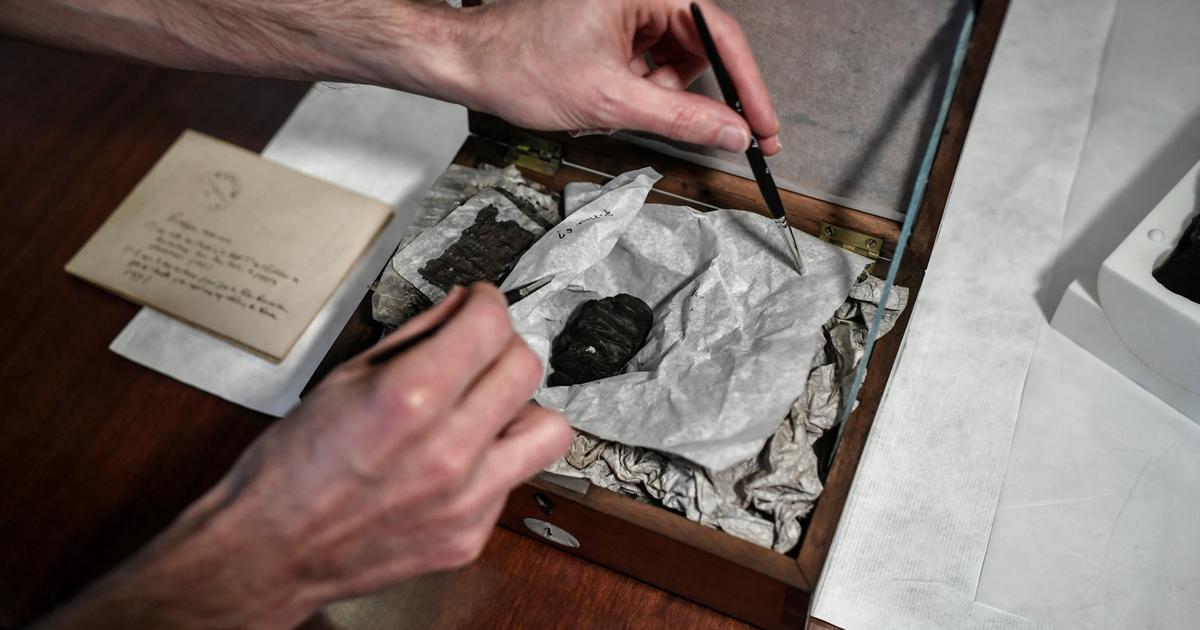STEFANE DE SAKUTIN / AFP
Newly deciphered passages from texts that survived the 79 AD eruption of Mount Vesuvius reveal the exact location of the philosopher’s burial.
Immersing yourself in the secrets of a remote era thanks to the most modern technology is no longer a utopia. The carbonized papyri of Herculaneum, which have preserved their secrets for more than 2,000 years, are becoming less and less impenetrable. These scrolls, preserved in ashes, discovered in the 18th century in one of the residences of the city hit by the eruption of Vesuvius in AD 79, called the “Papyrus Villa”, arouse the curiosity of researchers. More than 1,800 were placed on shelves in the villa owned by Calpurnius Pison Caesoninus, father-in-law of Julius Caesar.
In recent decades, people have worked to develop non-invasive techniques to unlock the secrets of these extremely fragile papyri. Last February, following an international competition created by Brent Seales, a computer science researcher at the University of Kentucky in the United States, three researchers managed to decipher a small part of it using artificial intelligence.
Read alsoThe Herculaneum papyrus burned during the eruption of Vesuvius has been deciphered
In addition to artificial intelligence, imaging and philology have also enabled significant progress. The National Library of Naples, where most of the texts are stored, presented the promising results of the project “Greek Schools”, born in 2021 from a collaboration between the University of Pisa, the Library of Naples to decipher the rare scrolls. The researchers managed to decipher more than a thousand previously unpublished words, or about 30% of the text, announced Graziano Ranocchia, a papylogist from the University of Pisa who is coordinating the study. “Greek Schools”, ANSA, the Italian news agency tells us.
Prestigious resting place
From papyrus Academy of Athenswritten by the Epicurean philosopher Philodemus of Gadara, these new revelations shed light on little-known aspects of Plato’s life. “The project, in addition to studying the state of preservation of the papyri, aims to produce an updated edition Philosophers’ Review by Philodemus, the earliest history of Greek philosophy in our possession. History of the Academy is one of them and contains much exclusive information about Plato and the development of the Academy under his successors”explains Graziano Ranocchia Corriere fiorentino.
Among the most surprising revelations is the exact location of the philosopher’s burial, a garden dedicated to him at the Academy of Athens, near the Museion, the sacred sanctuary of the Muses. Until now, it was believed that he was buried in some random place in the institution, although he had a designated and prestigious resting place. The ten fragments analyzed also reveal that the philosopher was probably sold into slavery on the island of Aegina between 404 BC, when the Spartans conquered the island, and 399 BC, immediately after Socrates’ death, and not in 387 BC, during of your stay. in Sicily at the court of the tyrant Dionysius I of Syracuse. Another passage reveals a dialogue from Plato where the philosopher sharply criticizes the performance of a barbarian musician from Thrace. “This is a huge step, even though the study is still at an early stage: the real impact in terms of knowledge will be seen in the coming years.”muses Graziano Ranocchia.

